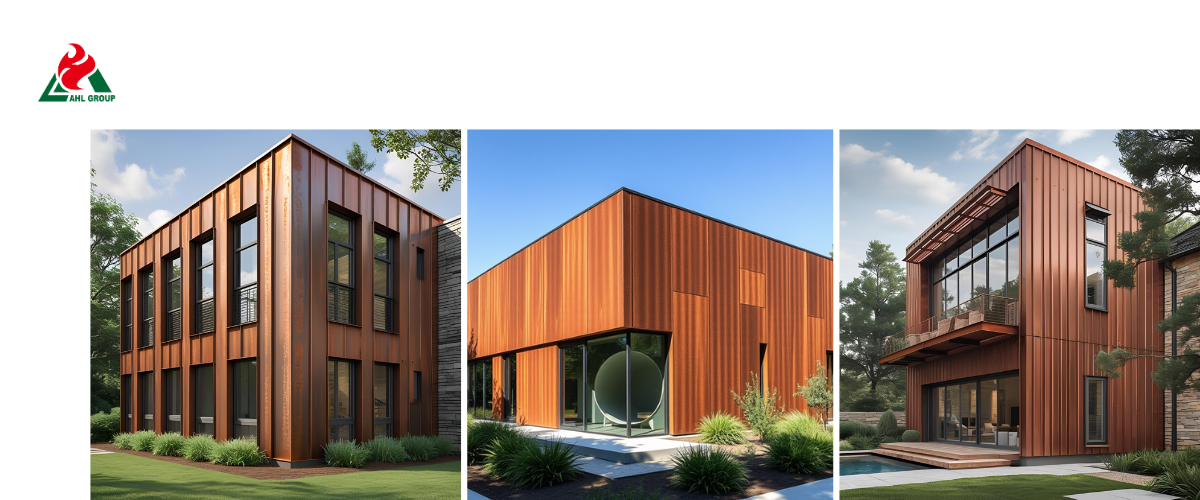Serviceability is usually the primary consideration when selecting materials for the exterior of a building, especially cladding materials. Developers, architects, and homeowners expect the building envelope to be effective for a long period of time and require little maintenance, besides offering an attractive appearance. Corten metal cladding can be one of the perfect choices because it has excellent corrosion resistance and a unique appearance of wear and tear. However, how long does it actually last, and what elements should be considered before making a decision? This guidance explores the longevity of Corten steel cladding and supports your decision-making process with information.
.png)
.png)
What is Corten Steel?
There is a class of steel alloys known as “variable” or “weathering” steel developed to save the necessity of applying paint. Its two primary attributes - resistance to corrosion and tensile strength - earned it its name. After exposure to the weather, corten steel will exhibit a stable patina, while ordinary carbon steel will deteriorate. Instead of serving as a symptom of deterioration, this patina acts as a protective barrier against deep-seated corrosion. For this reason, it is particularly well suited for cladding and other external construction in applications.
Corten steel provides a much longer service life compared to traditional cladding materials like vinyl, aluminum, or untreated steel, with little structural or aesthetic compromise.
Factors Affecting Life Expectancy
While Corten steel is engineered to be durable, some controllable external factors will affect its long-term performance:
• Environmental Factors: One of the best ways for Corten steel to work well is in an environment that alternates between wet and dry conditions. Persistent humidity exposure in wet coastal or tropical regions can prevent or retard the development of a protective patina.
• Moisture and Humidity: Prolonged exposure to high humidity or constant moisture can accelerate corrosion and render the protective coating unprotective. For this reason, it must be installed correctly to avoid standing water.
• Temperature Fluctuations: Corten steel is resistant to warping and fracture under both extremely hot and cold conditions. However, in the presence of frequent freeze-thaw cycles, construction problems may become more significant.
• Quality of Installation: Problems with details such as tight overlaps, concealed water traps, or insufficient drainage will shorten service life. A correctly sloped, drained, and properly spaced installation will maximize service life.
• Maintenance Programs: However, periodic service and inspection can help extend service life. Preserving the patina involves the removal of trapped residue or stains in cracks and assuring adequate air circulation.
Typical Life Expectancy of Corten Metal Cladding
Corten steel cladding has a 40–80 year lifespan, or even longer, when installed professionally and under ideal circumstances. Public buildings constructed in the middle of the 20th century and weathering steel bridges are two noteworthy architectural examples that are still in outstanding shape today.
Examples of Case Studies:
• New York Barclays Center: After more than ten years, this prominent example of Corten cladding still looks bold and modern, showcasing the material's aging process.
• Australian Landscape Architecture Projects: Corten is used for cladding, sculptures, and retaining walls in many public parks; even after years of exposure, it maintains its structural integrity and aesthetic appeal.
Benefits of Weathering Steel Cladding
Besides durability, Corten steel has other helpful and appealing advantages:
• Corrosion Resistant: The copper-green finish that is formed at the surface keeps the internal steel from being affected by the environment.
• Low Maintenance: No painting, sealing or ongoing maintenance is necessary when the patina is stabilized, usually in 6 to 12 months.
• Visual Character: The appearance of this natural weathering changes with time, making the exterior façade of the building integrate with its surroundings.
• Design Flexibility: Perforated, sheeted, or contrasted with other materials.
• Eco-friendly: Reinforced concrete is highly durable and 100% recyclable, minimizing the replacement requirement and the negative consequences on the surrounding environment.
Maintenance Tips for Longevity
Use these professional recommendations to make the most of your Corten metal panel:
• Initial Weathering: During the initial stages, leave the material to weather naturally, but make sure that run-off does not discolor adjacent surfaces such as concrete.
• Drainage Design: Make sure the cladding has overlaps, drainage holes, and slopes to facilitate water run-off.
• Regular Cleaning: Remove dust and debris with a soft brush and water. Refrain from using harsh chemicals that can damage the patina.
• Prevent Moisture Retention: Find design defects like tight overlaps or water traps. Make sure there is adequate ventilation.
• Optional Coatings: Apply a vented sealant manufactured specifically for corten steel that is weather resistant in wet or marine conditions.

Conclusion
Corten steel siding for building facades that demand low-maintenance, environmentally friendly procurement, and unparalleled aesthetic attractiveness isn't just a fad; it's a reliable and smart choice. Designed to be a long-term investment in form and function, it can have a life expectancy of 40 to 80 years, according to climate and installation quality.
Whether you're scheduled for a communal installation, remodeling your home's exterior, or constructing a commercial façade, Corten steel panel cladding will provide dependable performance. Allow our technicians to assist you in selecting the Corten material that is best suited for your project.
Choose based on durability. Select an appearance. Take Corten.


